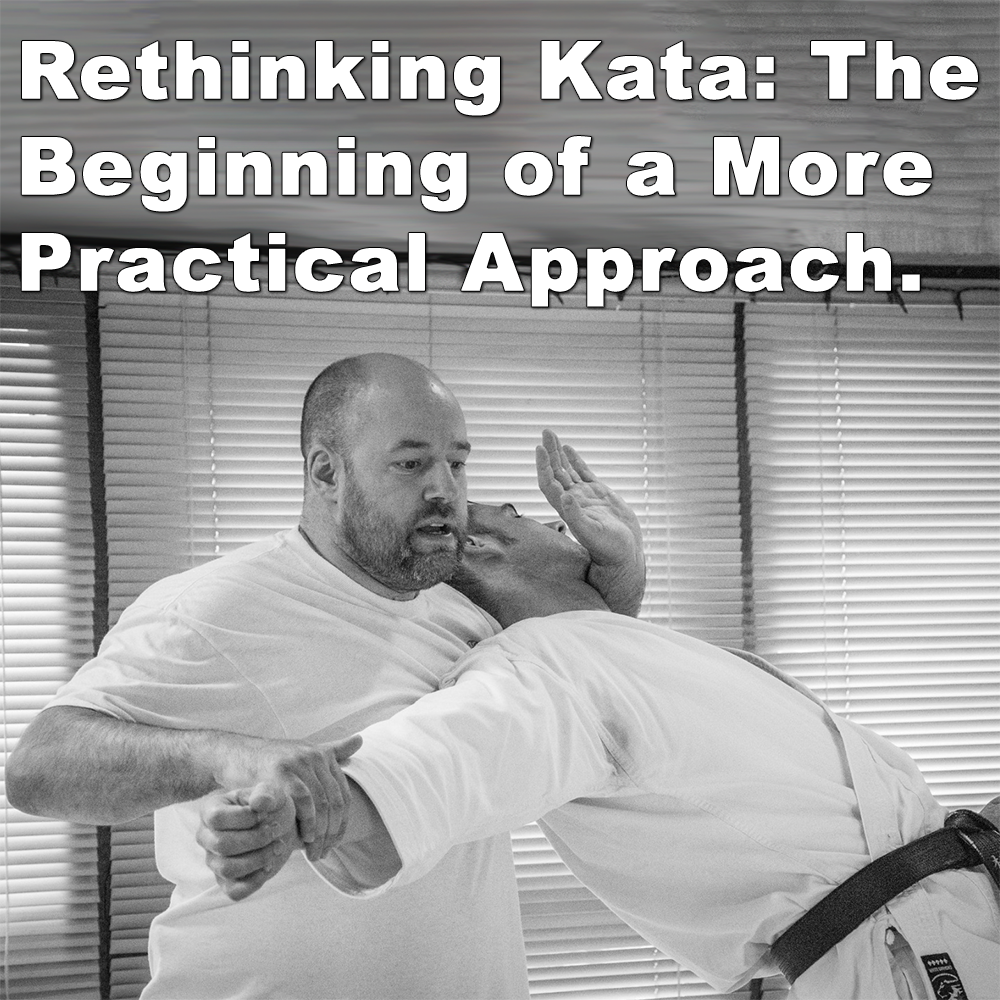
Rethinking Kata: The Beginning of a More Practical Approach.
Posted by ADAM CARTER on JUN 15, 2024

Rethinking Kata: The Beginning of a More Practical Approach.
(Approx 2minute 5 second read)
Many readers of my articles have asked for more insights into interpreting kata, feeling stuck with their current understanding. Let’s try to clarify some concepts.
Firstly, you have to change your mindset from block and counter to something more practical.
Let’s start at the beginning, always a good place to start.
In traditional kata, facing forward and then turning to the left or right to meet an incoming attack often seems nonsensical, doesn’t it? Seen in many kata demonstrations, especially with several opponents positioned at compass points.
If you’re practicing karate for competition or fun, this approach might be fine. And this method of practice is still widely taught today, it fits the narrative of a karate that is safe for its participants. But this method of training has no basis in realism.
Throughout karate’s history, kata creators have provided insights into the true purpose of these movements. Kenwa Mabuni, a prominent kata exponent, stated: “When interpreting kata, one must not get too caught up in these directions. For example, do not fall into the trap of thinking that just because a kata begins to the left that the opponent is always attacking from the left.”
For those seeking to try something different, remember that the angles you move to in the kata, do not indicate the direction of an incoming attack.
Imagine a person waiting on your left ready to strike. Would you stand, turned away, waiting to block? Of course not. You would face the attacker, maintain distance, and decide whether to escape, diffuse the situation verbally, or defend yourself physically.
So, if kata is not about responding to attacks from specific directions, what is it teaching us?
Kata instructs you to move to specific angles in relation to your opponent, creating positional dominance rather than remaining directly in front of them.
An effective application places you where your attack line faces the opponent, while they do not face you, providing you with an advantage.
Also consider this: any application should move you closer to your opponent, not at a traditional ‘zenkutsu dachi’ distance or greater, but closer. Try practicing your applications, your movement, from beginning to end (sometimes the beginning and middle are more important), against pushes, grabs, or swinging punches to see how your technique would work with this in mind. Remember, move away from karate type attacks and the thought of block and counter.
I’m simplifying these concepts to help some of you look at things a different way, not to patronize anyone.
The techniques of kata and the principles behind them, are versatile and can be applied in various scenarios, offering broader responses compared to the limited idea of block and counter against multiple opponents from fixed directions. Limiting a technique to specific defenses restricts its applicability.
“The beauty of a move lies not in its appearance but in the thought behind it.” – Aron Nimzowitsch
I hope this helps some of you to begin to look at kata application in a different way.
![]() Photo Credit: With thanks to Iain Abernethy
Photo Credit: With thanks to Iain Abernethy
